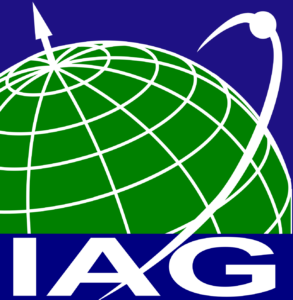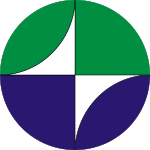SC 1.2: Global Reference Frames
Chair: Mathis Bloßfeld (Germany)
Terms of Reference
Sub-commission 1.2 focuses its activity on the definition and realization of the terrestrial reference system (TRS). The TRS realization, named Terrestrial Reference Frame (TRF), is fundamental to study and locate global phenomena or objects at the Earth’s surface, in the ocean or in space. It is used as the basis of several operational observation system processing chains such as sea level determination from space and Earth’s rotation monitoring as well as for most regional and national TRFs. In addition, especially for the precise determination of near-Earth satellite orbits, a TRF plays a fundamental role. Thus, TRF specifications in terms of origin, scale and orientation have to be optimally realized to satisfy user needs. That’s why Sub-commission 1.2 shall study either fundamental questions or more practical aspects that could improve current TRF determinations. It is of outmost importance to establish a quality control for TRF realizations since precise as well as long-term stable station coordinates serve as a backbone of numerous geosciences. A first step is to compare the different global TRF solutions currently provided on a non-frequent basis by the three IERS ITRS combination centres. Thanks to technological achievements and the development in the analysis of space-geodetic observations (such as GNSS, SLR, VLBI, and DORIS observations), more than one space technique provides sufficient sensitivity to geodetic datum parameters of TRF realizations. Of special interest is the potential contribution of GNSS to the global scale realization which is usually based on SLR and VLBI only. Besides SLR, also GNSS and DORIS might reliably contribute to the origin realization in the near future. Thanks to the accumulation of space geodesy observations and progress in modeling and analysis, non-stationary Earth surface displacements are nowadays clearly evidenced. The next generation TRF should be able to explicitly model them or should be constructed in such a way that those displacements are accurately modeled. Thereby, not only non-tidal loading models of different Earth system sub-components shall be used but also other geophysical models which are capable to picture global and regional geophysical phenomena such as, e.g., glacial isostatic adjustment (GIA). Nevertheless, technique systematic errors still exist in space geodesy products, which impact the TRF, especially its scale parameter. Dedicated satellite missions with onboard multi-technique sensors could improve further our understanding of technique systematic errors thanks to solving parameters common to multiple techniques. However, a set of accurate tie vectors that relate position of various technique instruments at co-location sites will still be of outmost importance to validate those new space-ties and monitor their long-term variations.
A further step forward could be established by investigating relativistic reference frames based on a network of clocks in space, linked with time transfer technologies. Such realized frame would be entirely decoupled from ground fixed stations and could be used to reference any point on the Earth’s surface. The relativistic frequency shift between clocks in space and on the ground would be a direct measurement of the Earth’s gravity potential. This technology can be used to realize a world height system based on a network of ground clocks. While this ultimate goal still requires intensive research works, TRF and future World Height Systems need to be studied in closer partnership in order to connect reference benchmarks, gravimeters or clocks to the TRF but also to provide consistent coordinate and height time-variations. The work of this Sub-commission will be done in partnership with the International Earth Rotation and Reference Systems Service (IERS) as well as the IAG Global Geodetic Observing System (GGOS).
Objectives
The main objectives of sub-commission 1.2 are the following:
- Definition of the global terrestrial reference frame (origin, scale and orientation, time evolution, standards, conventions, models);
- Comparison of existing global TRF solutions;
- Methods to determine local tie vectors and to relate instrument reference points to surveyed ground markers;
- Investigation of new methods to determine relative motions at co-location sites;
- Evaluation of technique systematic errors by focusing on errors at co-location sites;
- Enhanced forward modeling of the Earth’s surface deformation;
- Modeling of the reference frame in general relativity;
- Linking global height reference frames with the terrestrial reference frame;
- Pursuing studies and investigation related to multi-technique satellites (space ties) and concepts of novel dedicated missions with onboard multi-technique sensors
Link to Services
Sub-Commission 1.2 will establish close links to relevant services for geodetic reference frames, namely the IERS, GGOS and the IAG technique Services: International GNSS Service (IGS), International Laser Ranging Service (ILRS), International VLBI Service for Geodesy and Astrometry (IVS), and International DORIS Service (IDS).
A close link with the IERS Conventions Center will be also maintained, especially for chapter 4 (“Terrestrial Reference Systems and Frames”) updates. In addition, this Sub-Commission will work closely together with the IHRF (International Height Reference Frame) Coordination Center of the International Gravity Field Service (IGFS).



